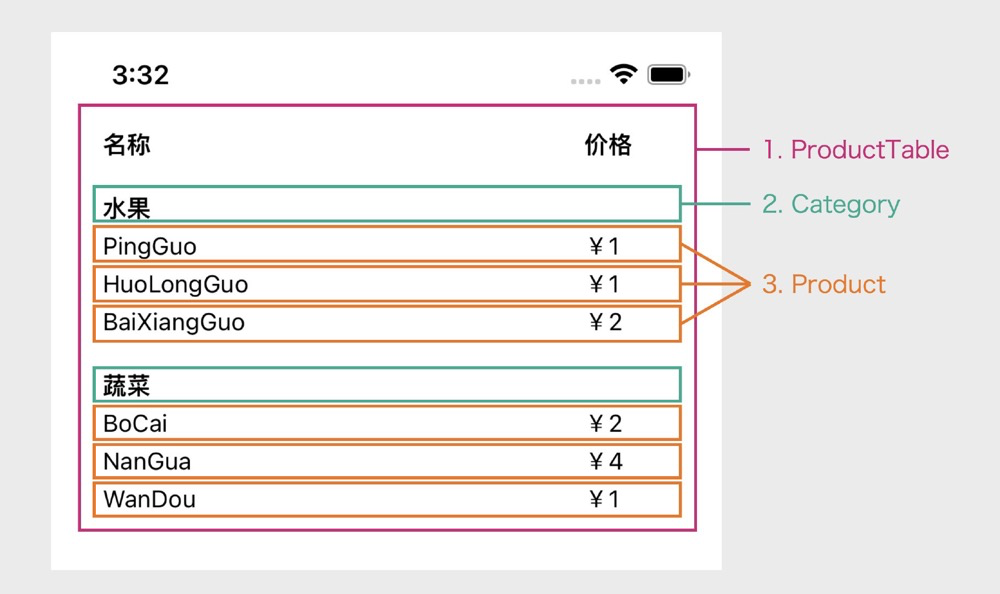ReactNative学习二-Component
搭建静态页面的原则
单一责任原则
每个组件都应该只有一个单一的功能,并且这个组件和其他组件没有相互依赖
分析一段代码来学习一个组件的基本构成

1 | export default function Product({product = {name: '苹果', price: '1元'} }) { |
- 第一步,导出组件。还记得单一责任原则吗?一个组件的责任要单一,一个文件的责任也要单一。因此通常一个文件中只有一个组件,用export default就可以将它导出,让其他文件import引入使用。
- 第二步,定义函数。组件是一种特殊的函数。组件名字的首字母一定是大写的,示例中的Product是组件,因此它的 P是大写的(当然,还有类组件,但用得会越来越少,这里我们不探讨,你可以自己额外搜些资料)。
- 第三步,接收入参。组件能从其父组件中接参数,而且组件是函数,因此该参数就是函数的入参,通常命名为属性 props。props 是一个对象,因此也可以直接对它进行解构,直接获取对象中的值。示例代码中用的就是用解构的方式来获取参数的,它直接获取了product参数,这里的product 是数据因此p是小写的。
- 第四步,返回 JSX。组件的返回值就是 JSX,我们前面也提到过,它是用来描述 UI 页面的,JSX 最终生成的是视图元素、文字元素。这里我们初始化了一个元素,和两个元素。
组件的文件结构
1 |
|
- index.js 文件:它是根文件,在该文件中registerComponent方法,会调用根组件 App,然后开始逐级调用,渲染应用;
- App 组件:在 App 组件中,用于表示商品信息的数据变量 PRODUCTS,在被调用时会通过 ProductTable 组件的 products 属性传递下去;
- ProductTable 组件:它被 App 组件调用后,它的调用入参就是 products。products 是一个数组,数组中的每一项就是 Product组件的入参product。每一项中的分类,就是Category 组件的入参 category。还是一样,组件首字母是大写的,属性、入参的首字母是小写的;
- Category 组件:它会被 ProductTable 组件调用两次,第一次调用接收的入参category是“水果”,第二次是“蔬菜”;
- Product 组件:它会被 ProductTable 组件调用 6 次,生成 6 个不同的商品元素,展示在手机屏幕上。
简而言之,组件间的数据是单向流动的,是逐层往下传递
本博客所有文章除特别声明外,均采用 CC BY-NC-SA 4.0 许可协议。转载请注明来自 火三!
